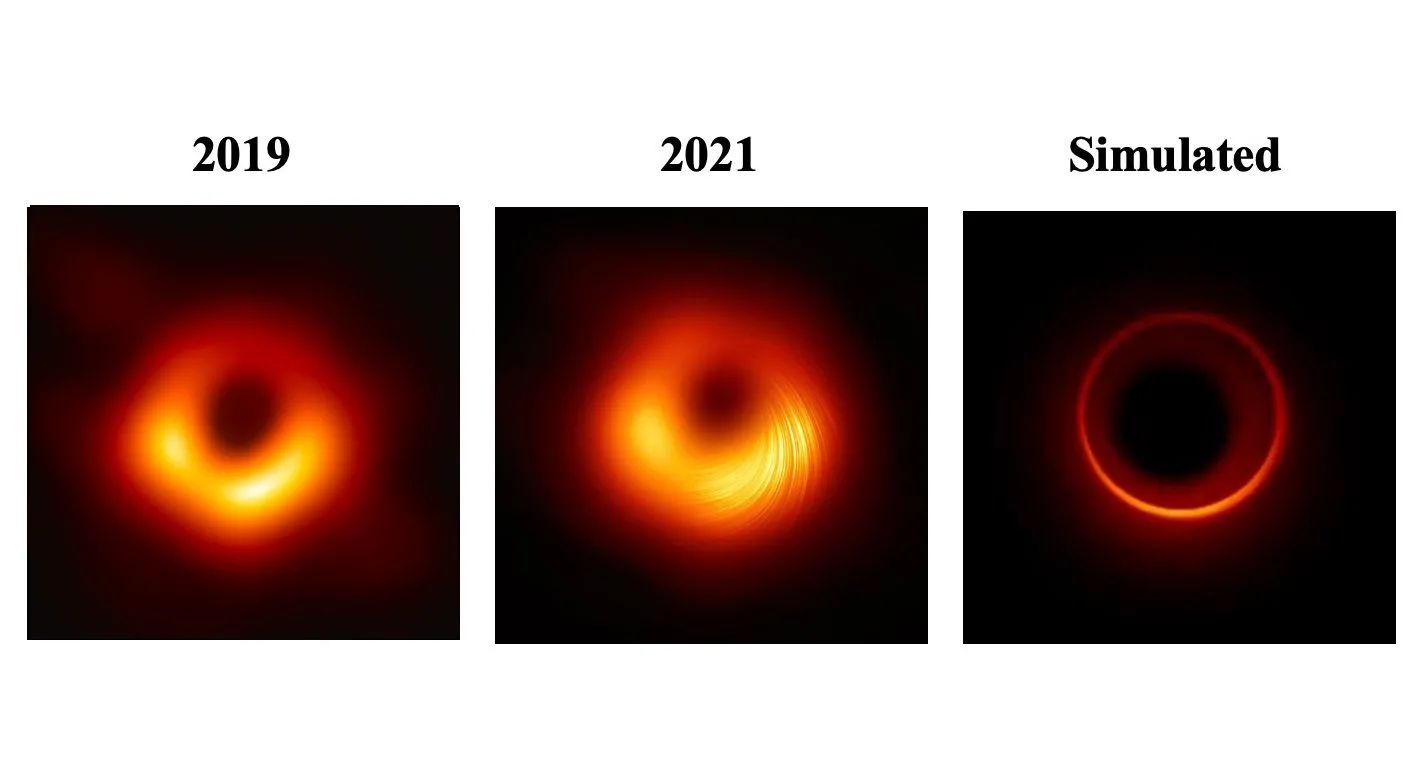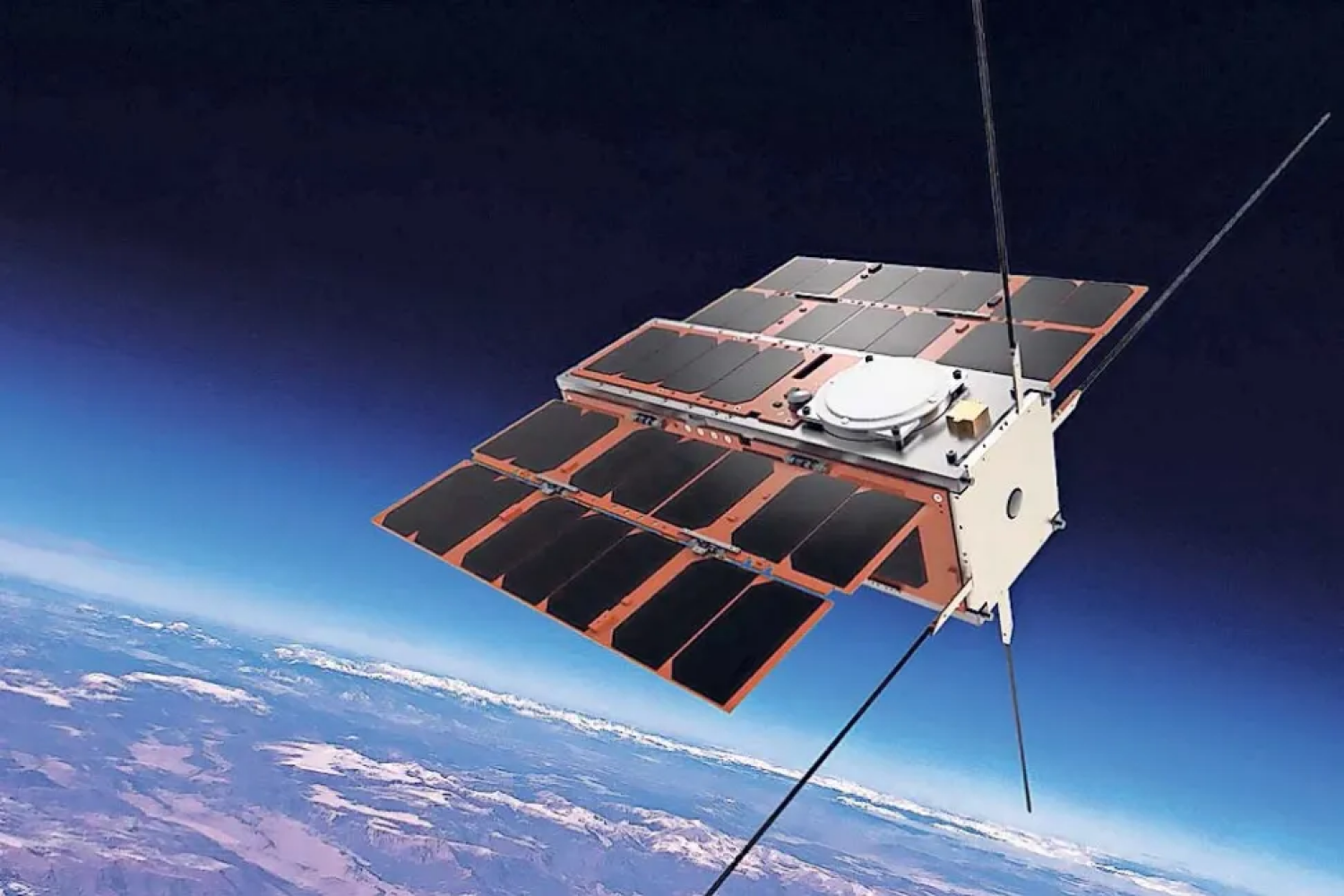In April 2019, a remarkable team of astronomers from around the world unveiled humanity’s first glimpse of a black hole—a massive entity formed from collapsed stars and gas that captures everything in its grasp, including light. The groundbreaking image showcased the supermassive black hole at the heart of a galaxy named Messier 87 (M87), revealing the vibrant gas swirling around its center. By March 2021, the same collaborative effort produced another awe-inspiring image that depicted the polarization of light surrounding the black hole, helping scientists unlock the secrets of its magnetic field.
The technology behind these remarkable images is the Event Horizon Telescope (EHT). It isn’t just a single device but a globally coordinated array of radio telescopes that work in unison to capture high-resolution images by combining data from each individual telescope. Scientists are now aiming to expand the EHT into space for an even clearer observation of M87’s black hole. However, this quest for the sharpest images in astronomy faces a significant hurdle: the daunting task of transmitting the telescope’s enormous data back to Earth. Enter a powerful laser communications (lasercom) system developed by MIT Lincoln Laboratory, designed to handle the high data rates required for the intricate analysis of black holes.
Expanding Baseline Distances into Space
The EHT’s notable images of M87’s black hole were created through a technique known as very long-baseline interferometry. This method collects radio wave light simultaneously from multiple telescopes spread across the globe, then analyzes the phase differences of these waves to ascertain the source’s direction. By using various combinations of these telescopes, the EHT collaboration—featuring experts from the Harvard-Smithsonian Center for Astrophysics (CfA) and MIT Haystack Observatory—effectively constructed an Earth-sized telescope to capture the faint features of a black hole situated 55 million light-years away from Earth.
In interferometry, the larger the telescope, the better the resolution of the captured image. To focus on finer details of black holes, a more expansive instrument is essential. Astronomers are eager to probe into the swirling gases as they spiral toward a black hole—a phenomenon known as accretion—and observe the black hole’s shadow, which may help identify the source of energy for the jet emanating from M87. Ultimately, capturing an image of the photon ring, where light orbits closest to the black hole before escaping, could provide an unprecedented opportunity to test Albert Einstein’s general theory of relativity.
Utilizing Earth-based telescopes limits the distance between them to about 13,000 kilometers, as they can only be positioned on opposite sides of our planet. Furthermore, these instruments are impeded by the Earth’s atmosphere, which complicates the observation of shorter wavelengths. By extending the EHT’s baseline and positioning at least one telescope in space, these restrictions can be overcome—this is precisely what the proposed CfA-led Black Hole Explorer (BHEX) mission endeavors to achieve.
A major challenge of this space-based initiative is the transfer of substantial datasets. The dataset that yielded the first EHT image was colossal, amounting to 4 petabytes, necessitating physical shipment of the data on disks for processing. Gathering data from an orbiting telescope poses an even greater challenge; the team must devise a system capable of transmitting data back to Earth at an impressive rate of around 100 gigabits per second (Gbps) to achieve their imaging goals.
Introducing TBIRD
MIT Lincoln Laboratory comes into play here. In May 2023, the lab’s TeraByte InfraRed Delivery (TBIRD) lasercom payload set a new standard by achieving the fastest data transfer from space, sending information at a remarkable rate of 200 Gbps—an astonishing 1,000 times faster than conventional satellite communication systems—from low Earth orbit (LEO).
NASA’s TeraByte InfraRed Delivery (TBIRD) lasercom demo completes mission
Video: MIT Lincoln Laboratory
“We developed an innovative technology for high-volume data transport from space to Earth,” explains Jade Wang, assistant leader of the laboratory’s Optical and Quantum Communications Group. “During the development process, we sought collaborations and additional missions that could utilize this ready-to-go data capability. The BHEX mission is one such opportunity. These high data rates will empower scientists to capture the photon ring structure of a black hole for the very first time.”
A dedicated lasercom team, led by Wang in collaboration with the CfA, is working to develop a long-distance, high-rate downlink system needed for the BHEX mission operating in middle Earth orbit (MEO).
“Laser communications are revolutionizing our expectations of astrophysical discoveries from space,” states CfA astrophysicist Michael Johnson, principal investigator for the BHEX mission. “Within the next decade, this extraordinary technology will take us to the brink of a black hole, providing insight into the realms where our existing understanding of physics falters.”
Even though TBIRD is immensely potent, enhancements are required to support the higher orbit necessary for BHEX’s scientific endeavors. The compact TBIRD payload (CubeSat) will undergo upgrades for larger aperture size and increased transmit power. Additionally, modifications to the TBIRD automatic request protocol, the error-control mechanism that ensures data integrity despite atmospheric effects, will be adapted to account for the extended round-trip times associated with a MEO mission. Furthermore, the TBIRD’s current “buffer and burst” architecture for data delivery will shift to a more streamlined approach.
“With TBIRD and other lasercom initiatives, we have proven that the technology for such a significant scientific mission is already in existence,” Wang emphasizes. “Contributing to groundbreaking scientific discovery is an exhilarating prospect.”
The BHEX mission concept has been evolving since 2019, boosted by technical and conceptual studies supported by the Smithsonian Astrophysical Observatory, NASA Goddard Space Flight Center’s Internal Research and Development program, the University of Arizona, and the ULVAC-Hayashi Seed Fund of the MIT-Japan Program at MIT International Science and Technology Initiatives. BHEX’s lasercom studies have also received backing from Fred Ehrsam and the Gordon and Betty Moore Foundation.
Photo credit & article inspired by: Massachusetts Institute of Technology



